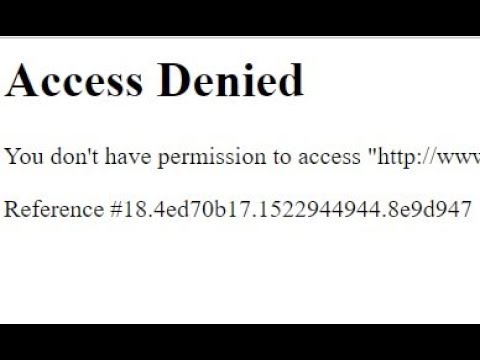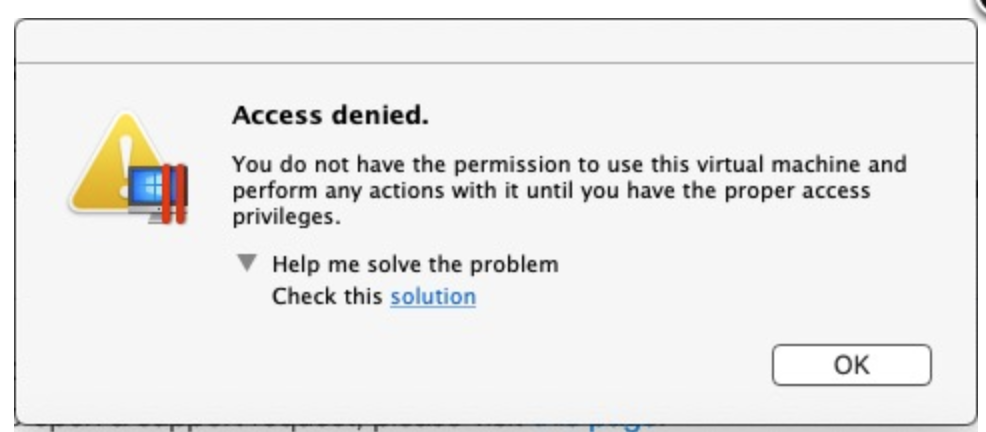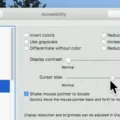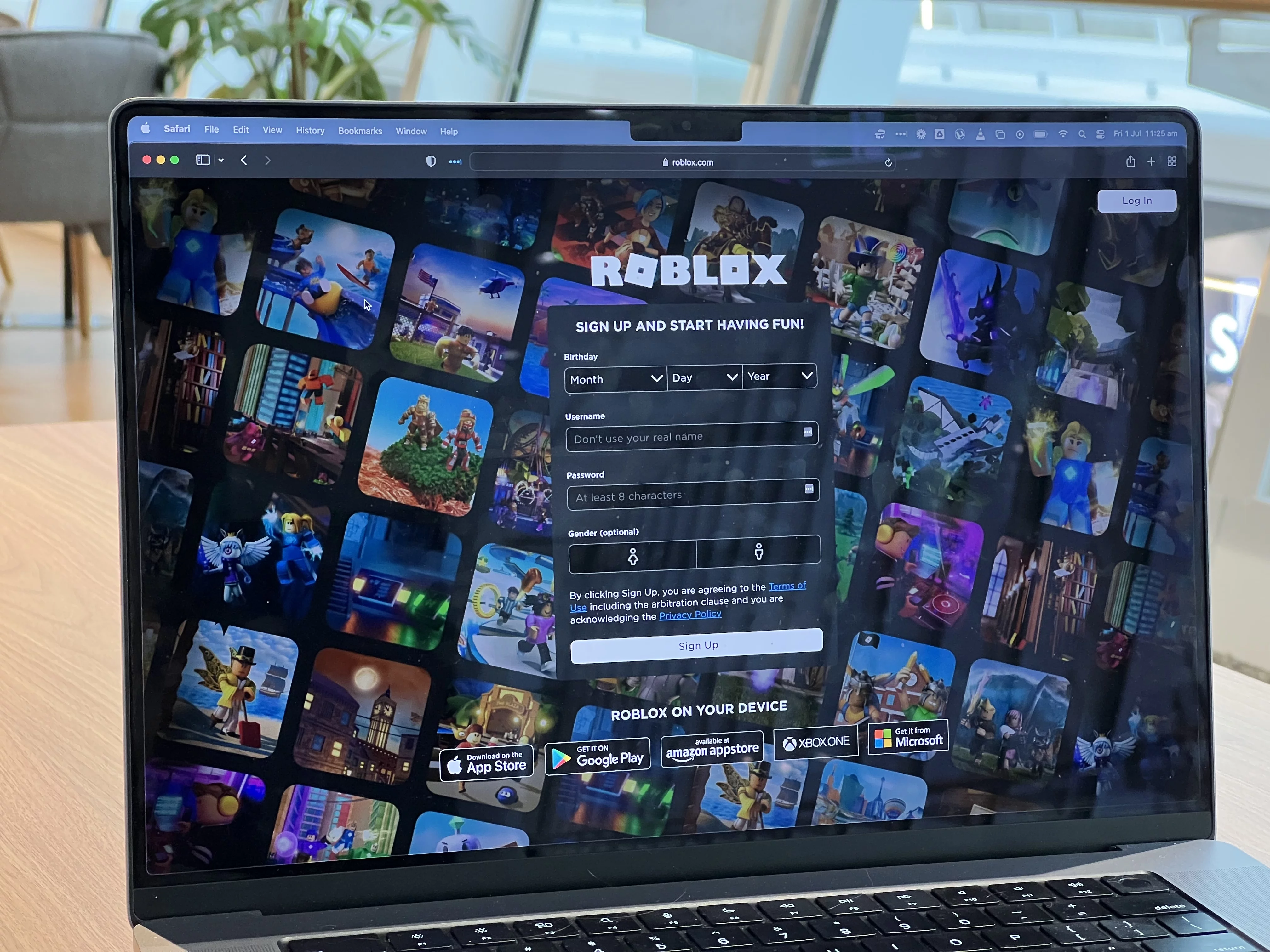Are you having trouble accessing a certain website uing Safari? Are you getting an error message that says “Access Denied – You Don’t Have Permission To Access This Server”? If so, then this blog post is for you.
The “Access Denied – You Don’t Have Permission To Access This Server” error message usually occurs because the website is blocking your access due to security settings. In order to fix this issue, there are several steps that you can take on your device and in the Safari app on your Mac.
On Your Device
First, tap Settings > Safari and turn off both Prevent cross-site tracking and Block All Cookies. This will allow Safari to access websites with more security settings enabled.
In the Safari App on Your Mac
Next, open Safari > Preferences > Privacy and make sure that both Prevent cross-site tracking and Block all cookies are unchecked. This will allow the website to be accessed without any issues.
Clear Browser Data & Reset Browser
If these steps do not work, then you may need to clear all browser data for a specific website or reset your browser completely. To clear browser data for a specific website, open Safari and go to History > Clear Website Data and select the website from the list. Once this is done, restart your browser completely by ging to Settings > Advanced > Reset and clicking on ‘Reset All Content & Settings’.
Turn Off Your VPN Extension & Disable the Proxy Server for LAN
If these steps still do not work, then try turning off any VPN extension or disabling the proxy server for LAN in order to access the website without any restrictions. Another option is to download a premium VPN which can help bypass any restrictions that might be preventing you from accessing the website.
Finally, if all else fails, try switching over to another WiFi network as this has worked for several people experiencing similar issues in the past. If none of these solutions work for you then it may be necessary to contact your internet service provider in order to investigate further into why you are unable to access certain websites using Safari.

Fixing Access Denied in Safari
To fix access denied in Safari, you will need to check your website preferences. Start by opening the Safari app on your device or Mac and navigating to the Preferences menu. In the Privacy tab, make sure that Prevent cross-site tracking and Block all cookies are unchecked. This will allow your browser to access sites that have previously been blocked. You may also need to clear your browsing history, wich can be done in the same menu. Once these settings have been adjusted, try reloading the page and see if you can now access it.
Fixing Access Denied on a Server
The first step to fixing an ‘Access Denied’ error on a server is to determine whether the problem is caused by a user or a system issue. If it is a user issue, then it usually means that the user does not have the correct permissions to access the server. To fix this, you will need to update the user’s permissions or provide them with new credentials.
If it is a system issue, then you may need to clear all data for a specific website or reset your browser. You can do this by going into your browser’s settings and selecting the option ‘Clear Browsing Data’. Additionally, you can try turning off any VPN extension you have installed or disabling the proxy server for LAN.
Finally, if these steps don’t work then it might be worth downloading a premium VPN as this may help resolve any access issues you are having.
Fixing Access Denied on a Mac Server
To fix an ‘Access Denied’ error on a Mac server, you’ll need to fist check the permissions of the shared folder. To do this:
1. Open the ‘System Preferences’ App.
2. Select ‘Sharing’ from the list of options.
3. Select ‘File Sharing’ from the ‘Services’ list on the left side of the window.
4. Choose the shared folder from the ‘Shared Folders’ list, and then click on it to view its permissions.
5. To add a user, click + under the ‘Users’ list and choose your account from here.
6. Once done, click on your username and make sure that under ‘Privileges’, you have read and write access enabled for your account – this should fix any access denied errors when attempting to open/edit files in this folder!

Fixing Access Denied on an iPhone Server
If you’re havig trouble connecting to a server on your iPhone and are seeing an “access denied” error, there are a few steps you can try to resolve the issue.
First, check to make sure that the server is online and working properly. You may also want to try resetting your network settings. To do this, go to Settings > General > Reset > Reset Network Settings. This will reset Wi-Fi networks and passwords, cellular settings, and VPN settings on your device.
If the issue persists, you may want to try restarting your iPhone or iPad by pressing and holding down the power button until you see the Apple logo appear onscreen. You should also check for any system updates by going to Settings > General > Software Update. Finally, if all else fails, you could try switching to a different Wi-Fi network or contacting your network administrator for assistance.
Understanding Access Denied Errors
If you’re suddenly geting an “Access Denied” error when trying to access a website, it’s likely due to your browser using different proxy settings or VPN than what’s set on your Windows 10 PC. This could be caused by a third-party program, security software, or other settings that are blocking the website. To fix this issue, make sure that you’re using the correct proxy settings and disable any security software. Additionally, check for any browser extensions or add-ons that may be causing this issue and remove them if necessary.
Overcoming Access Denied Errors
If you’re seeing an “Access Denied” message when trying to access a file or folder, it means that your user account does not have the necessary permissions to view or modify the file. To get rid of this error and gain access, you need to change the permissions associated with the file or folder.
First, right-click on the file or folder and select ‘Properties’. Then click on the ‘Security’ tab. Under ‘Group or user names’, select your username and see what permissions you currently have. If you don’t have the necessary permissions, click ‘Edit’ and then check off all of the boxes for which permissions you need. Finally, click ‘OK’ to save your changes. After these steps are complete, you should be able to access the file or folder without any issues.
Why Is My iPhone Denying Me Access to a Website?
There are a few potential reasons why you might be denied access to a website on your iPhone. The most lkely reason is that the website has been blocked by the Content & Privacy Restrictions in your device’s Settings. This feature is enabled by default on iOS 12 and above, and can be disabled by entering your Screen Time or Restrictions passcode. On iOS 11 and below, this feature is called Restrictions, and can be disabled by entering your Restrictions passcode.
Another possibility is that you are trying to access a website which has been restricted or blocked by your Internet Service Provider (ISP). In this case, you should contact your ISP to see if they can unblock the website.
Finally, some websites may be blocked due to geographical restrictions. If this is the case, you may need to use a Virtual Private Network (VPN) in order to bypass these restrictions.
Understanding ‘Access Denied’ Error on Mac
Access Denied on Mac means that the user account you are using does not have sufficient permissions to access the content in the folder. To gain access, you’ll need to change the folder’s permissions settings to give your user account appropriate rights. This can be done by locating the folder in a Finder window and then adjusting the folder’s permissions settings.
Bypassing Permission Denied on Mac
The error ‘permission denied’ occurs when a user does not have the necessary permissions to access or modify a file. To bypass this error on Mac, you will need to change the file’s permissions.
To do this, open Finder and locate the file in question. Right-click on the file and select ‘Get Info’. This will bring up a window with information about that file, including its current permissions. If the permissions listed don’t allow you to write to the file, then that’s likey what is causing the ‘permission denied’ error.
To fix it, click on your username in the Privilege column and choose Read & Write from the dropdown menu. Once you have done this, try accessing or modifying the file again and it should work withut any issues.
Fixing Access-Denied Sites on Mobile Phones
If you’re having trouble accessing a website on your phone and you see an “Access Denied” message, thre are several steps you can take to try to fix the problem. First, check to make sure that you have the latest version of your Android device’s operating system. If not, update it. You may also need to clear your browser cache and cookies or reset your device’s network settings.
If thee methods don’t work, you may need to reset the permissions for the site in Chrome. To do this, open Chrome on your phone or tablet and go to the site. To the left of the address bar, tap Lock > Permissions. Tap the permission that you want to update and select it (or tap Reset Permissions if you want to clear all settings).
Finally, if none of these steps work, try accessing the website from a different browser or device. If the site still won’t load properly, contact your internet service provider or website administrator for help resolving the issue.
Fixing Access Denied on a Mobile Device
If you are receiving an “Access Denied” message on your phone, it could be due to a few different things. First, check if you have granted the app in question the necssary permissions. On your phone, go to Settings > Apps, tap the app you are trying to use, and then tap Permissions to make sure that all needed permissions have been granted.
If the app still doesn’t seem to be able to access what it needs, try clearing the app’s cache and data. Go to Settings > Apps > Tap on the app > Storage > Clear Cache and Clear Data. Doing this will reset the app so that it can start fresh with no data left over from before.
You may also need to update your device’s operating system in order for cerain apps or functions to work properly. To check for updates, go to Settings > System > Advanced > System Update and check for any available updates.
If none of these steps work, try uninstalling and reinstalling the app from your device’s App Store or Play Store. This is usually a good way to fix any errors related to an application not working as expected.
Safari Cannot Connect to Server on iPhone: What Does It Mean?
When Safari cannot connect to the server on your iPhone, it means that thre is an issue with your device’s connection to the internet. This could be due to a variety of reasons, such as a temporary disruption in service from your internet service provider or an issue with your DNS settings. To troubleshoot this issue, try restarting both your router and your iPhone and then see if you can connect again. If not, then you may need to change your DNS settings by going into Settings > Wi-Fi > Your Network Name and then tapping the “i” button next to it. From here, scroll down and select “Configure DNS”. Here you can choose either “Automatic” or “Manual” for your DNS settings – it might be worth trying both options and seeing which works best for you.








